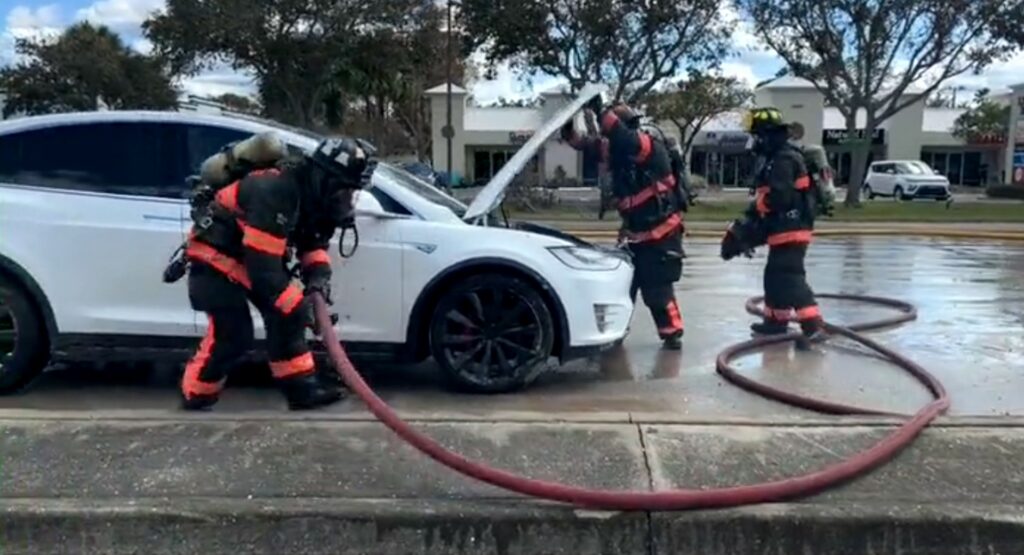The Newton fire department in Massachusetts has become just the second in America to put a new safety device into action to help protect firefighters when responding to an EV-related emergency.
Already in use in Europe and Asia, the Emergency Plug, as it’s called, looks a bit like the handle you’d see at a charging station and, indeed, plugs into an EV or a PHEV’s charging port. By doing so, it tricks the vehicle into thinking that it’s charging, forcing the transmission to shift into the park position.
“In every car worldwide it is regulated by software that when a car is charging, it must not be able to drive away,” write the makers of the Emergency Plug. “With this one plug, you can block all types of plug-in cars against driving away.”
Read: U.S. DoT Mandates EVs And Hybrids Can’t Run Silent At Low Speeds
That’s helpful in situations when firefighters are attempting to remove someone from a vehicle, or while responding to any number of accidents, because it can be hard for those outside of a vehicle to know if an EV or PHEV is switched on or not.
“If it’s a ‘normal’ combustion car, you can kind of anticipate the hazards,” Newton Fire Capt. Phillip McCully told WBUR News. “With an electric vehicle, because they run so quiet, you almost can’t anticipate the sudden vehicle movements.”
Indeed, the department was inspired to look into the product after a dangerous incident that occurred in New York City. That city’s fire department became the first in the nation to use the Emergency Plug after a firefighter was hurt while responding to an accident involving a plug-in hybrid vehicle.
The firefighter was responding to an incident in which a BMW X3 xDrive30e plug-in hybrid ran into a Volvo S60. The crossover wound up with two wheels on the sedan and two wheels on the ground and while a firefighter was attempting to help rescue the driver, the car lurched forward and landed on him, injuring him in the process.
The Newton Fire Department will be trained to use the Emergency Plug and by the end of January, it will be put on vehicles that respond to accidents. The department hopes to then share the technology with neighboring communities.
“What this will do is hopefully transform the way first responders will be responding,” McCully said, “and being a little bit safer with electric vehicle accidents.”





